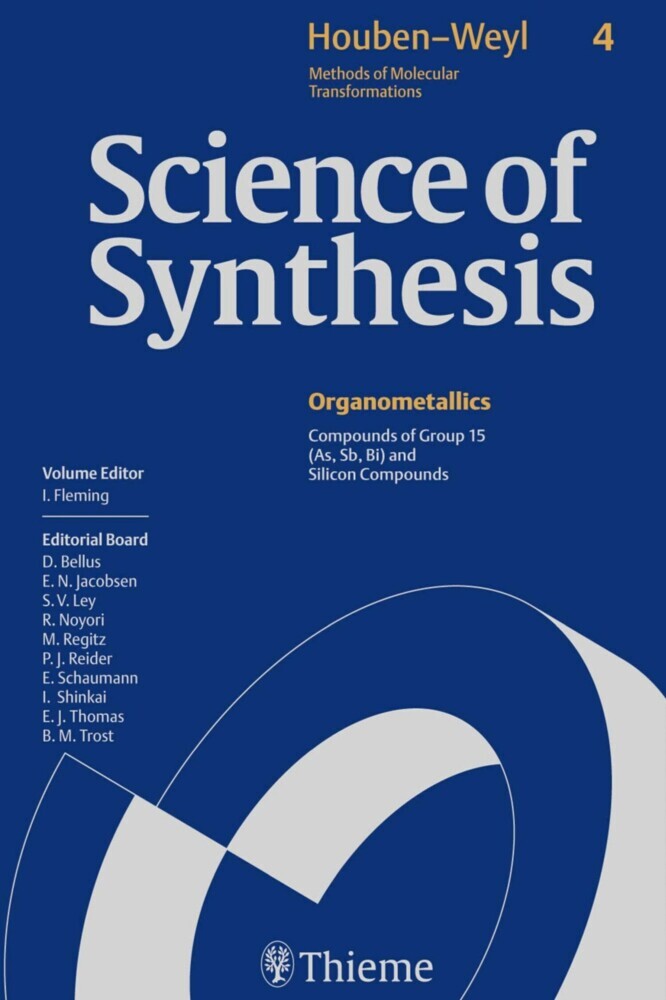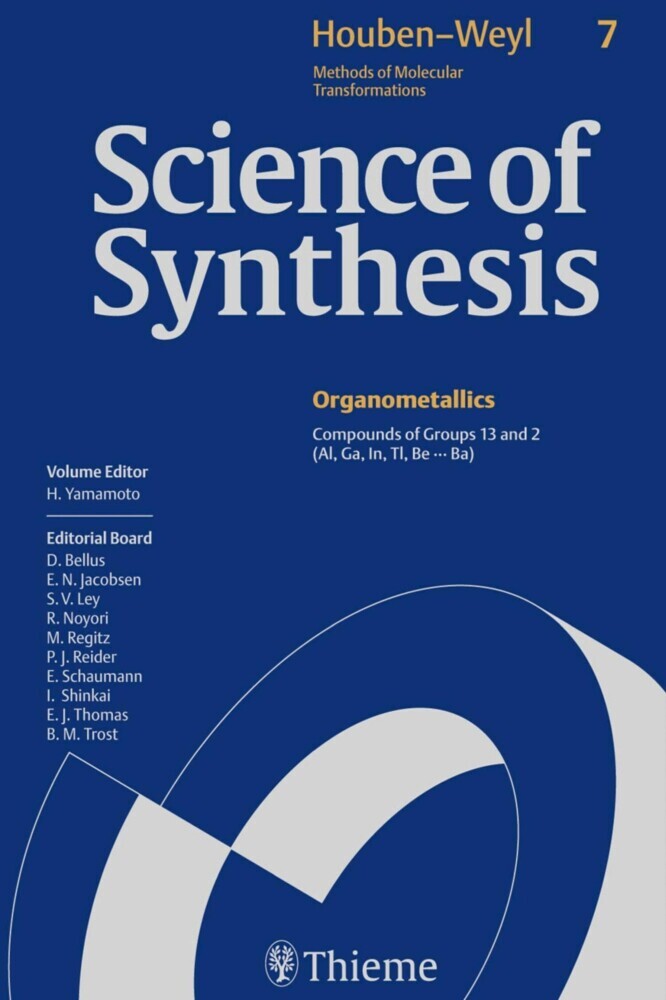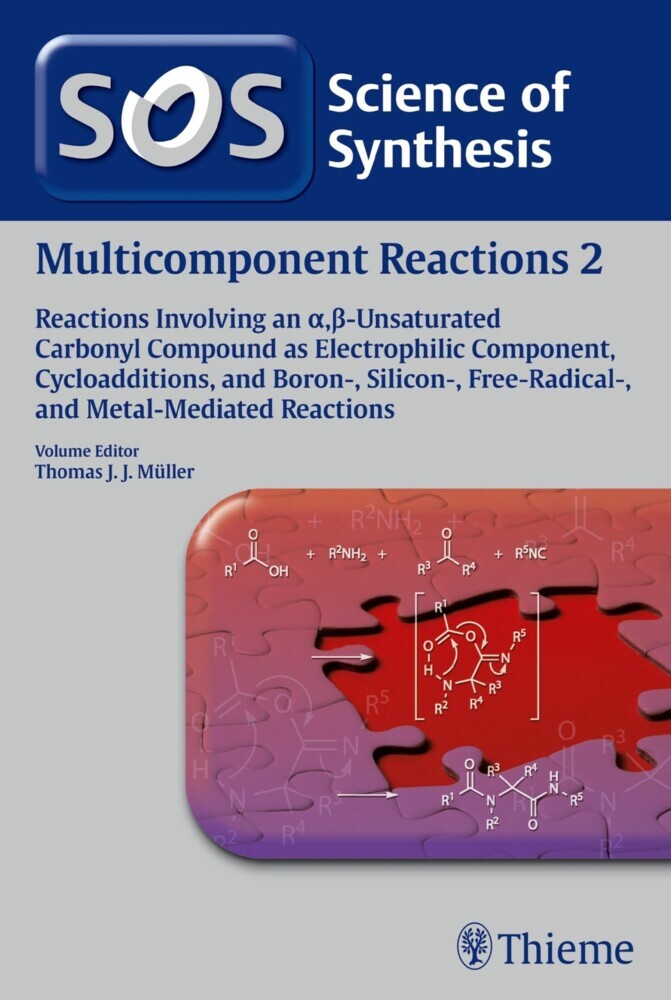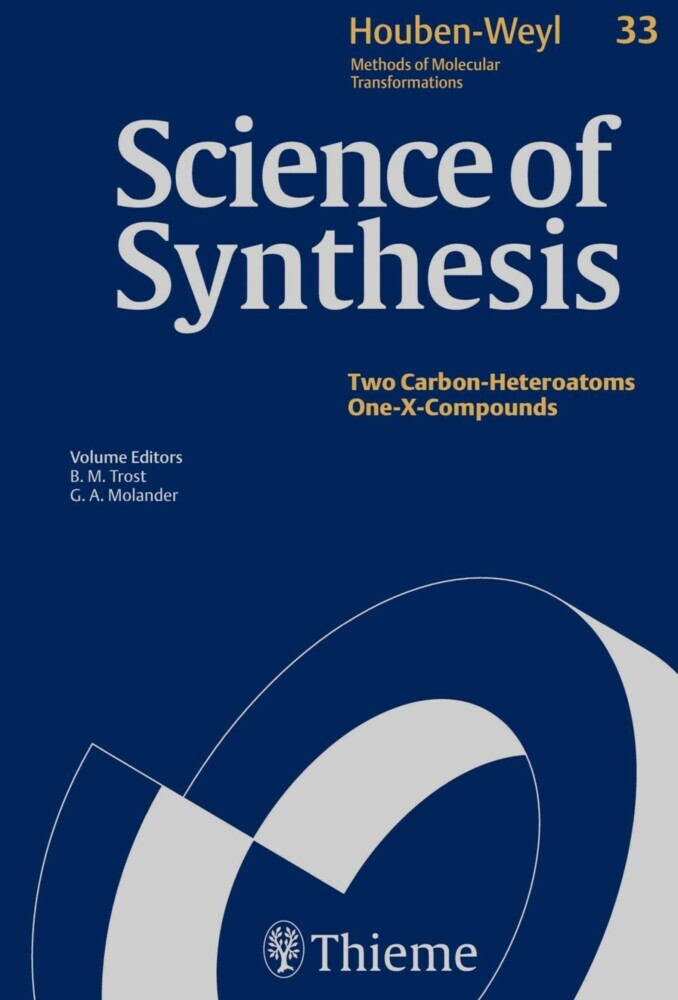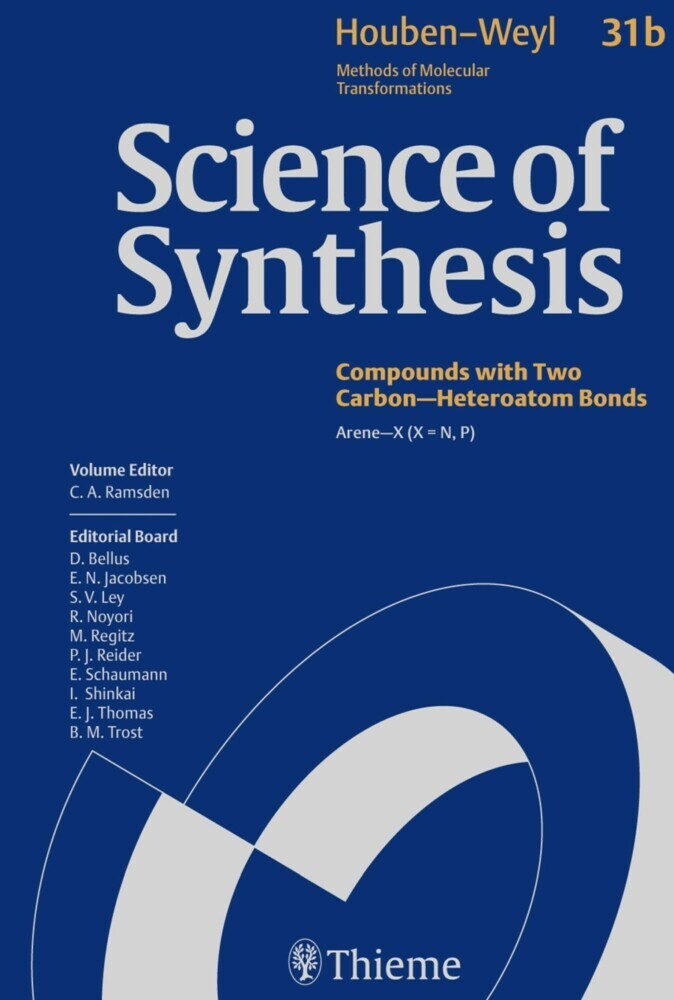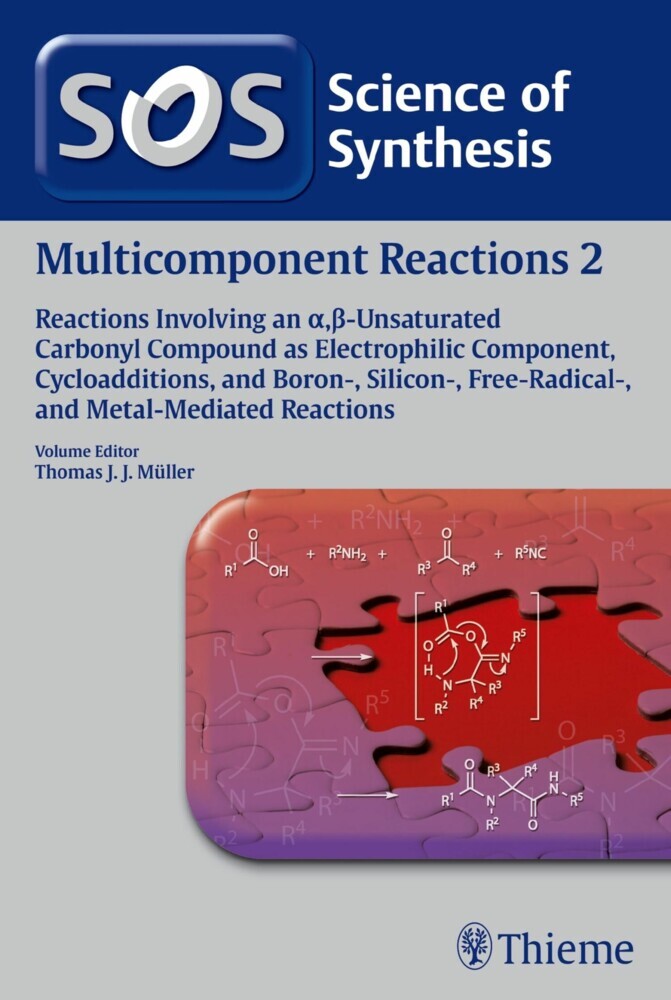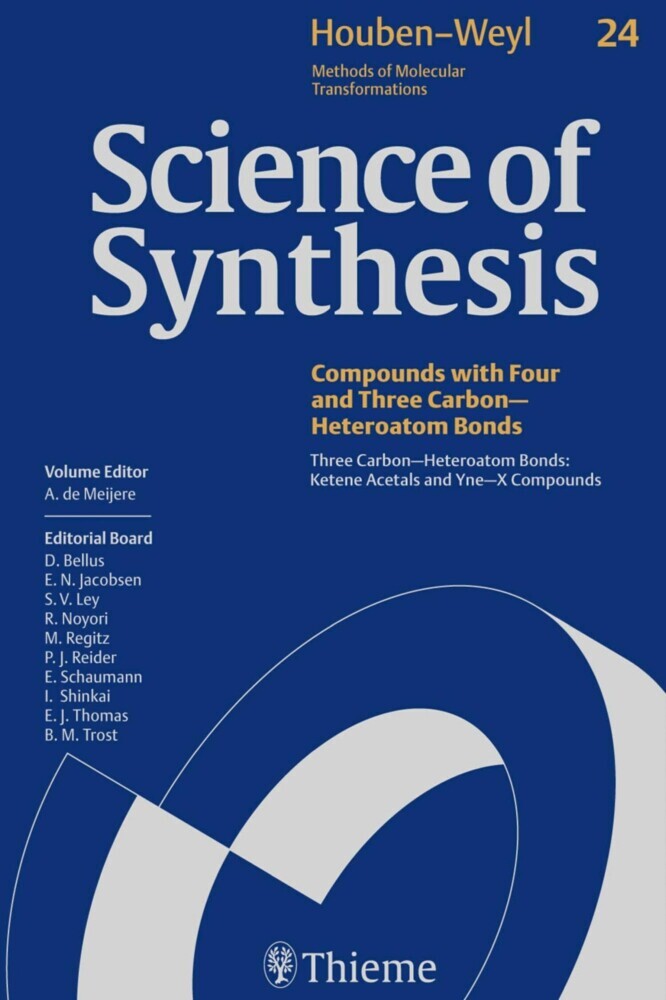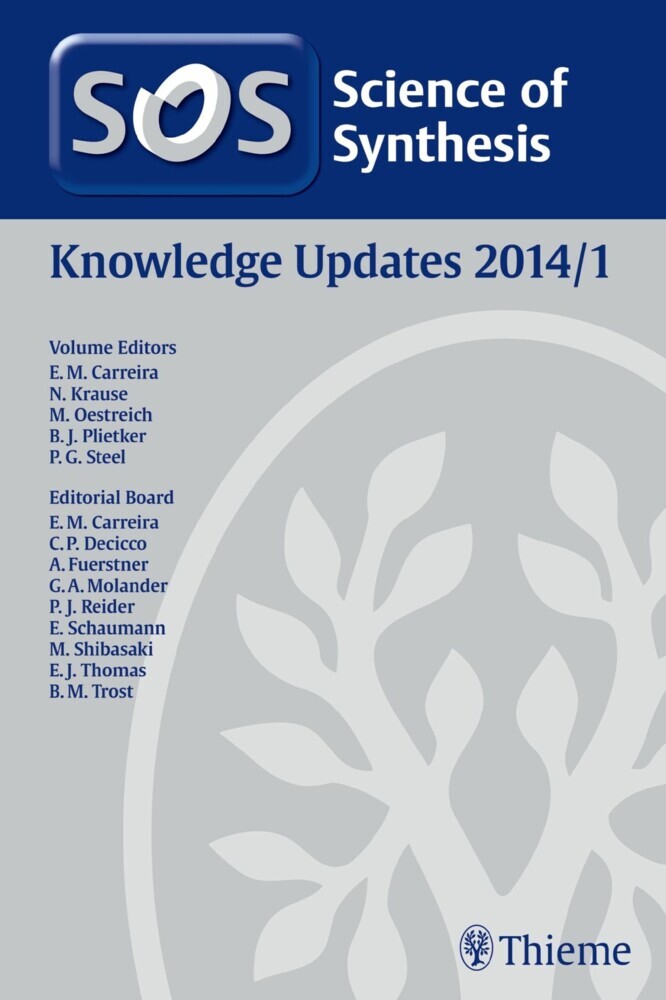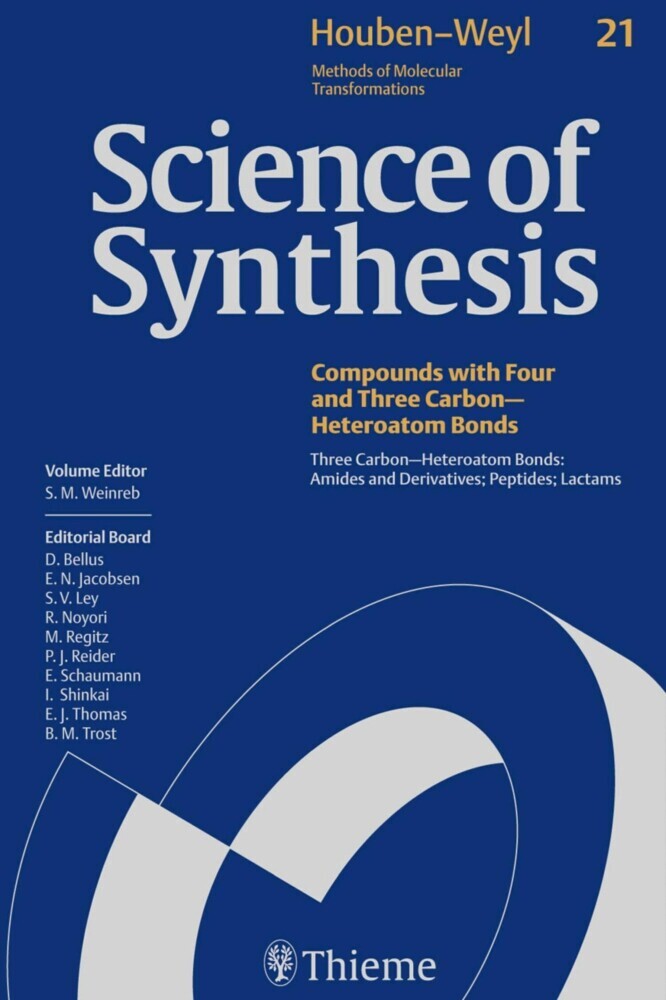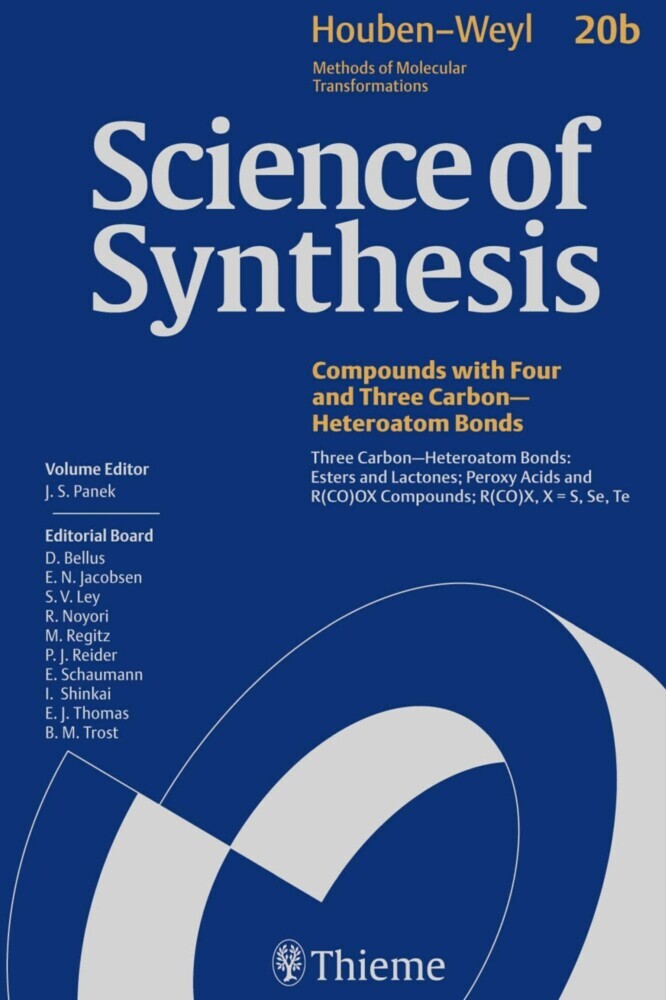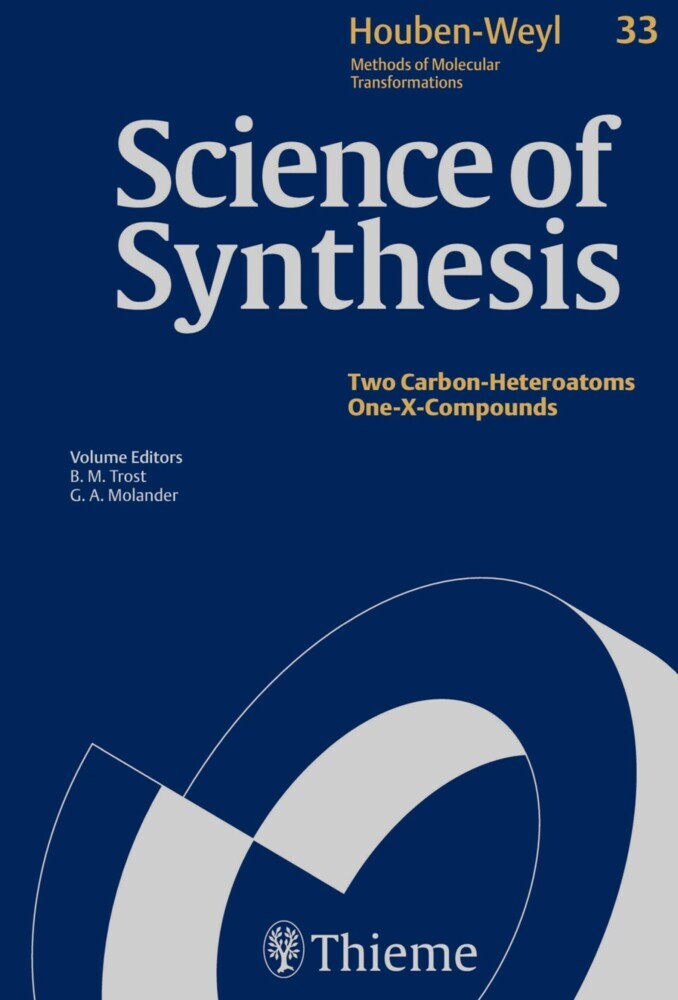Science of Synthesis: Houben-Weyl Methods of Molecular Transformations Vol. 4
Science of Synthesis: Houben-Weyl Methods of Molecular Transformations Vol. 4
Science of Synthesis: Houben-Weyl Methods of Molecular Transformations is the entirely new edition of the acclaimed reference series, Houben-Weyl, the standard synthetic chemistry resource since 1909. This new edition is published in English and will comprise of 48 volumes published between the years 2000 and 2008.
Science of Synthesis is a quality reference work developed by a highly esteemed editorial board to provide a comprehensive and critical selection of reliable organic and organometallic synthetic methods. Science of Synthesis is designed to be the first point of reference when searching for a synthesis strategy.
This volume covers compounds of the group 15 metaloids (As, Sb, Bi) and Silicon. In Volume 4, there are single chapters devoted to each of the three group 15 elements, and then 42 chapters for the various kinds of silicon-containing compounds used in organic synthesis. The chapters are organized by the functionality attached to the element, and appear in an order determined by the rules used for the whole series of Science of Synthesis, with the space given to each determined both by the range of chemistry that needs to be described and by the importance of the functional arrangement in synthesis.
For full information on the Science of Synthesis series, visit the Science of Synthesis Homepage.
Ian Fleming
1;Science of Synthesis - Volume 4: Compounds of Group 15 (As, Sb, Bi) and Silicon Compounds;1 1.1;Title page;3 1.2;Imprint;5 1.3;Preface;6 1.4;Volume Editor's Preface;7 1.5;Overview;10 1.6;Table of Contents;14 1.7;Introduction;48 1.8;4.1 Product Class 1: Arsenic Compounds;60 1.8.1;4.1.1 Product Subclass 1: Triorganoarsenic(III) and Related Compounds;60 1.8.1.1;Synthesis of Product Subclass 1;60 1.8.1.1.1;4.1.1.1 Method 1: Alkylation of Metallic Arsenides;60 1.8.1.1.2;4.1.1.2 Method 2: Transmetalation from Other Organometallic Reagents;61 1.8.1.1.2.1;4.1.1.2.1 Variation 1: From Grignard Reagents and Arsenic(III) Halides;61 1.8.1.1.2.2;4.1.1.2.2 Variation 2: From Organolithium Reagents and Arsenic(III) Halides;62 1.8.1.1.3;4.1.1.3 Method 3: Direct Synthesis from Metallic Arsenic;63 1.8.1.1.4;4.1.1.4 Method 4: Reduction of Arsenic(V) Oxides;63 1.8.1.1.5;4.1.1.5 Method 5: Addition of Arsines to Multiple Bonds;64 1.8.1.1.6;4.1.1.6 Method 6: Cleavage of Tetraorganoarsenic Derivatives;65 1.8.1.2;Applications of Product Subclass 1 in Organic Synthesis;65 1.8.1.2.1;4.1.1.7 Method 7: Triorganoarsenic(III) Derivatives as Halogen Equivalents;65 1.8.1.2.1.1;4.1.1.7.1 Variation 1: Nucleophilic Halovinylation;66 1.8.1.2.1.2;4.1.1.7.2 Variation 2: Carbonyl Haloalkenation;66 1.8.2;4.1.2 Product Subclass 2: Diorganoarsenic(III) and Related Compounds;66 1.8.2.1;Synthesis of Product Subclass 2;67 1.8.2.1.1;4.1.2.1 Method 1: Transmetalation from Other Organometallic Reagents;67 1.8.2.1.1.1;4.1.2.1.1 Variation 1: From Grignard Reagents and Arsenic(III) Halides;67 1.8.2.1.1.2;4.1.2.1.2 Variation 2: From Organolithium Reagents and Arsenic(III) Halides;67 1.8.2.1.2;4.1.2.2 Method 2: Synthesis from Elemental Arsenic;68 1.8.2.1.3;4.1.2.3 Method 3: Thermolysis of Arsenic(V) Derivatives;68 1.8.2.1.4;4.1.2.4 Method 4: Redistribution Reactions;69 1.8.3;4.1.3 Product Subclass 3: Monoorganoarsenic(III) and Related Compounds;69 1.8.3.1;Synthesis of Product Subclass 3;70 1.8.3.1.1;4.1.3.1 Method 1: Transmetalation from Other Organometallic Reagents;70 1.8.3.1.1.1;4.1.3.1.1 Variation 1: From Grignard Reagents and Arsenic(III) Derivatives;70 1.8.3.1.1.2;4.1.3.1.2 Variation 2: From Organolithium Reagents and Arsenic(III) Derivatives;70 1.8.3.1.2;4.1.3.2 Method 2: Reduction of Arsonic Acids;71 1.8.3.1.3;4.1.3.3 Method 3: Redistribution Reactions;71 1.8.4;4.1.4 Product Subclass 4: Pentaorganoarsenic(V) and Related Compounds;72 1.8.4.1;Synthesis of Product Subclass 4;72 1.8.4.1.1;4.1.4.1 Method 1: Transmetalation from Other Organometallic Reagents;72 1.8.4.1.2;4.1.4.2 Method 2: Reaction Of Arsinimines with Organolithium Reagents;73 1.8.5;4.1.5 Product Subclass 5: Arsonium Ylides and Related Compounds;73 1.8.5.1;Synthesis of Product Subclass 5;73 1.8.5.1.1;4.1.5.1 Method 1: From Arsonium Salts by the "Salt Method";74 1.8.5.1.2;4.1.5.2 Method 2: From Reaction with Arsenic(V) Dihalides;74 1.8.5.1.3;4.1.5.3 Method 3: From Arsine Oxides;75 1.8.5.1.4;4.1.5.4 Method 4: From Diazonium Salts;75 1.8.5.1.5;4.1.5.5 Method 5: From Other Ylides by "Transylidation";76 1.8.5.2;Applications of Product Subclass 5 in Organic Synthesis;77 1.8.5.2.1;4.1.5.6 Method 6: Reactions of Stabilized Arsonium Ylides with Nonconjugated Carbonyl Compounds;77 1.8.5.2.1.1;4.1.5.6.1 Variation 1: Reactions of Stabilized Arsonium Ylides with a,ß-Unsaturated Carbonyl Compounds;79 1.8.5.2.2;4.1.5.7 Method 7: Reactions of Semistabilized Arsonium Ylides with Carbonyl Compounds;79 1.8.5.2.3;4.1.5.8 Method 8: Reactions of Reactive Arsonium Ylides with Carbonyl Compounds;83 1.8.6;4.1.6 Product Subclass 6: Tetraorganoarsenic(V) and Related Compounds;84 1.8.6.1;Synthesis of Product Subclass 6;84 1.8.6.1.1;4.1.6.1 Method 1: By Alkylation of Organoarsenic(III) Derivatives;84 1.8.6.1.2;4.1.6.2 Method 2: Reaction of Arsine Oxides with Grignard Reagents;85 1.8.7;4.1.7 Product Subclass 7: Triorganoarsenic(V) and Related Compounds;85 1.8.7.1;Synthesis of Product Subclass 7;85 1
| ISBN | 9783131717412 |
|---|---|
| Artikelnummer | 9783131717412 |
| Medientyp | E-Book - PDF |
| Copyrightjahr | 2014 |
| Verlag | Georg Thieme Verlag KG |
| Umfang | 1107 Seiten |
| Sprache | Englisch |
| Kopierschutz | Digitales Wasserzeichen |

